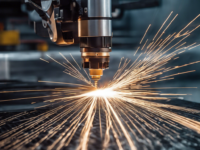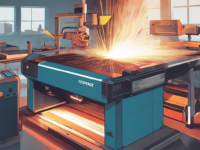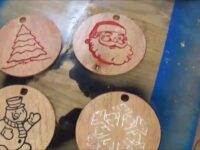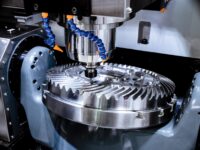CNC PCB - high quality with the budget 3018 CNC
We are showing you to that you can make your own high quality PCB with a CNC. In this video we show you the full capabilities of ...
CNC 3018: A Capable and Affordable PCB Milling Solution
The CNC 3018 machine is a popular choice among hobbyists and small-scale manufacturers for its versatility and affordability. One of its standout applications is milling printed circuit boards (PCBs), a task that it can handle effectively with the right setup and tools. This machine's precise control over the cutting process, combined with its ability to work with a variety of materials, allows users to create intricate and complex designs on PCBs with ease. Additionally, the CNC 3018's compact size and relatively low cost make it an attractive option for those looking to produce small batches of PCBs without breaking the bank. Overall, the CNC 3018 is a valuable tool for anyone looking to delve into the world of PCB manufacturing without making a significant financial investment.
Pros —————— Cons
| Affordable price point | Limited work area |
| Capable of milling PCBs | Requires careful setup and calibration |
| Various bit options available | Some bits may have limitations |
The PCB Milling Process
To mill PCBs effectively with the CNC 3018, you need to follow a detailed process that involves setting up the machine correctly, choosing the right bits for isolation routing, and generating tool paths to export the G-code for milling. Here's an overview of the key steps:
1. Design Verification: Ensure that your PCB design is accurate and optimized for milling.
2. Machine Calibration: Properly calibrate the CNC 3018 to ensure precise movements and accurate milling.
3. Bit Selection: Choose the appropriate bit for isolation routing based on your requirements and budget.
4. Tool Path Generation: Utilize software tools or Python scripts to generate tool paths and export the G-code for your PCB design.
5. Milling Process: Load the G-code into the CNC 3018 and carefully monitor the milling process.
Bit Options for Isolation Routing
When it comes to selecting the right bit for isolation routing on the CNC 3018, there are several options to consider:
Bit ——————–TypeDescription
| 20° V Bits (Bundled) | Produce fine traces but require slower cutting and shallow depths. |
| 30° V Bits | More robust but result in wider tracks when cutting deeper. |
| 20° V Bits with Flutes | More forgiving in terms of cutting speeds and depths, but have a minimum track width of around 0.4mm. |
| Isolation Routing Bits | Designed specifically for isolation routing, providing the best results but at a higher cost. |
Achieving Success with the CNC 3018
Milling PCBs on a budget-friendly CNC machine like the CNC 3018 is a feasible process that requires attention to detail in setup, tool selection, and following the correct procedures for generating tool paths and exporting G-code. While it may have some limitations compared to industrial-grade machines, the CNC 3018 can be a reliable and cost-effective solution for hobbyists, makers, and small businesses looking to produce high-quality PCBs in-house.
By investing time and effort into mastering the PCB milling process on the CNC 3018, you can unlock a world of possibilities for prototyping, small-scale production, and exploring the exciting realm of electronics and circuit design.





















